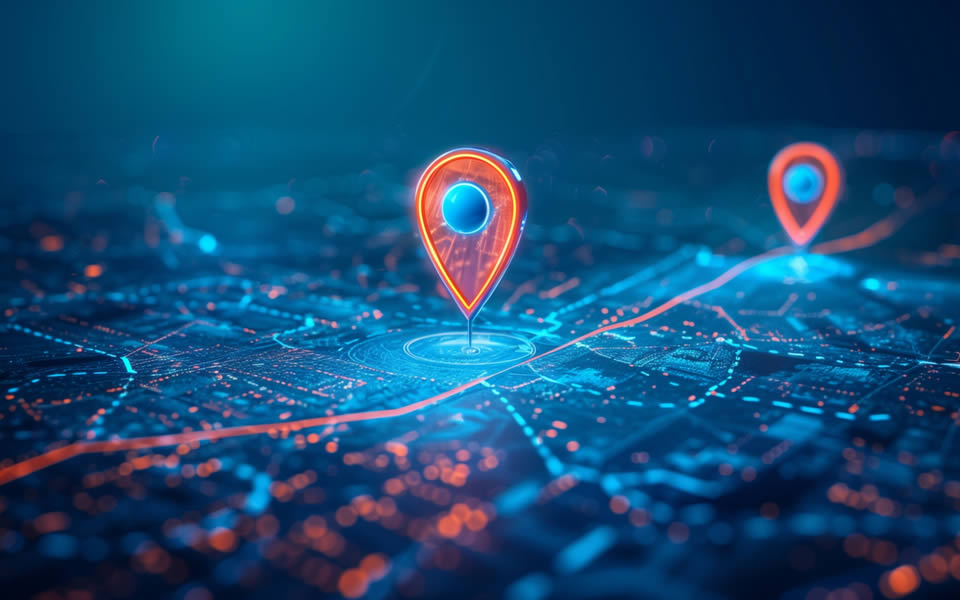Charting New Territory: Geospatial Data in Litigation
By Joe Sremack, CFE, CISA, Partner, Advisory Services
Geospatial data has become an important subject for litigators to understand and apply. Litigation technology has seen the integration of advanced technologies that have altered traditional approaches, and geospatial data has quietly become a central part of that approach. Geospatial data provides a comprehensive, highly accurate view of geographic information, such as location, distance, and spatial relationships. Class action litigation, environmental law, and any matter involving mobile device data are among the areas where lawyers now need to be highly adept at understanding and utilizing this data.
Understanding Geospatial Data
Geospatial data comes from an array of sources, including satellites, GPS devices, mobile devices, and even social media platforms. It includes information from latitude-longitude coordinates, aerial imagery, satellite data, 3D renderings, and geographic information system (GIS) data. Geospatial data is analyzed and presented through maps and specialized software, allowing attorneys to visualize complex information in a coherent and interpretable manner. In addition, the data can be analyzed and quantified to determine the locations for key events, movements, and other patterns.
Applications in Litigation
Geospatial data is used in many types of cases. Most notably, it is routinely used in environmental law cases, land disputes, fraud investigations, and class action litigation.
- Environmental Litigation: Environmental attorneys increasingly rely on geospatial data to support claims related to pollution, deforestation, natural disasters, and climate change impacts. For instance, in a case involving allegations of illegal pollution, geospatial data can show the extent of contamination across a geographic area over time. Such evidence can be critical in demonstrating causation and the impact of pollution on specific communities or ecosystems.
- Land Use and Property Disputes: In land use and property disputes, geospatial data is instrumental in delineating property boundaries and understanding historical land use patterns. This can be particularly useful in cases where deeds and paper records are ambiguous or contested. GIS data can provide a clear and precise representation of property lines, easements, and historical changes to the landscape, offering clarity and objectivity in court proceedings.
- Class Action Litigation: Class action litigators can leverage geospatial data to identify and define the scope of affected populations. For instance, in a mass tort case involving hazardous waste exposure, GIS mapping can delineate the geographic extent of the exposure and identify potential class members based on their proximity to the contamination site. This can be used for class certification and in class action litigation to determine the merits of the case and its impact on potentially affected individuals.
- Fraud Investigations: Geospatial data is useful in fraud investigations to track the movements of individuals and assets. For instance, GPS and satellite data can monitor the transportation routes of goods in supply chain fraud cases, helping to identify discrepancies and fraudulent activities, and mobile device data can determine the location of individuals at points in time.
- Product Liability Cases: In product liability litigation, geospatial data can help identify the geographic distribution of defective products and the scope of their impact. GIS mapping can visualize areas where faulty products were sold or used, aiding in identifying affected consumers and the extent of harm caused.
- Employment Litigation: In employment disputes, particularly those involving claims of wrongful termination or discrimination based on workplace location, geospatial data can provide insights into employees’ geographic distribution and working conditions. This data can help support or refute claims of unequal treatment or unsafe working environments.
Types of Geospatial Data Used in Litigation
Different types of geospatial data can be harnessed depending on the nature of the case. These include:
- GIS Data: Geographic Information System data integrates various layers of geographic information, such as demographic, land use, and environmental data. This comprehensive approach allows for sophisticated analysis and visualization, supporting various litigation types, including class actions and environmental lawsuits.
- Mobile and Social Media Data: Location data from mobile devices and social media platforms can be used to track individuals’ movements and locations over time. This data is increasingly being used in white-collar fraud litigation and class action litigation.
- GPS Data: Global Positioning System device data offers precise location information and is frequently used in class action litigation, personal injury, and accident cases. It can also be pivotal in fraud investigations to establish the whereabouts of individuals or vehicles at specific times. In addition, wearable devices contain GPS data that can be analyzed in a similar manner.
- Remote Sensing Data: Acquired from satellite and aerial platforms, remote sensing data provides high-resolution imagery and information about land surfaces. This type of data is crucial in environmental litigation and land use disputes where visual evidence of changes to the landscape is required.
- Satellite Imagery: Satellite imagery involves capturing photographs of the Earth’s surface from satellites. Such imagery can document large-scale ecological changes, pollution spread, and deforestation in environmental litigation. For instance, it can provide visual proof of illegal land clearing or water contamination, supporting claims and illustrating ecological impacts.
- Aerial Photography: Aerial photography captures images from aircraft or drones. These images are important in land use and zoning disputes to show property boundaries and historical changes in land use. They also help in construction litigation by documenting the progress and compliance of building projects over time.
- LiDAR Data: Light Detection and Ranging (LiDAR) data uses laser pulses to create high-resolution 3D models of the Earth’s surface. In construction disputes, LiDAR data provides detailed topographic information, helping to verify elevation, contour changes, and compliance with design specifications. However, this type of data does not always contain geospatial information because some LiDAR data is not given geographic coordinates that allow it to be viewed as a map.
Conclusion
Geospatial data offers attorneys a powerful tool to enhance the evidentiary base of their cases. By providing a visual representation and detailed analysis of geographic and spatial information, this data can clarify complex issues, substantiate claims, and ultimately support more informed and effective arguments. As technology advances, the role of geospatial data in litigation is poised to expand, offering new opportunities and challenges for litigators.







